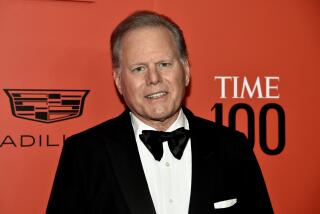Executive Pensions Could Raise Ire
- Share via
Pay may soon take a back seat to pensions when it comes to raising investor ire over executive compensation.
The Securities and Exchange Commission voted Wednesday to force companies to reveal more information about how top executives are compensated, including salaries and perks.
But what’s most likely to shock investors are pension and deferred-compensation accruals that will appear in readable form for the first time in next year’s proxy statements, some experts say.
“Instead of finding out about all this stuff years later when someone retires, we are instantly going to know the ‘holy cow’ factor” of pension promises to executives, said Joshua Lurie, vice president of executive compensation and business development at Salary.com in Waltham, Mass.
As standard pension programs for rank-and-file workers increasingly have been terminated to cut corporate expenses, hefty executive pensions have become a hot-button issue with some activist investors.
Under current SEC rules, companies are required to state whether executives have a pension and what the plan would pay for various compensation levels and years of service.
But the disclosure charts in company documents are so nebulous that only an actuary can figure out how much specific executives would get in real numbers -- and even then, the figures have mostly been estimates because there hasn’t been enough information provided to be precise.
The new SEC rules, which go into effect in December, require that any money accruing to an executive’s pension be added into annual compensation figures in the yearly proxy statements sent to shareholders.
In addition, companies must provide a second set of charts that will reveal precisely how much each of their five most highly compensated officers have accumulated in their individual pension and deferred-compensation accounts.
In many cases, those numbers will run into the tens of millions of dollars, predicted Patrick McGurn, executive vice president of Institutional Shareholder Services, a firm that provides guidance on corporate governance issues to big investors.
“That’s going to be the area that produces the stunned-silence moments,” he said. “Those numbers could be eye-popping.”
To be sure, many or most of the large pension-benefit commitments will have been accumulated by executives over time.
In some cases, however, companies that want to recruit a new executive promise that individual faster pension vesting, said David Leach, a compensation consultant with ECG Advisors in Los Angeles.
In other words, whereas most employees earn one year of pension credits for each year worked, some executives get two years of credit -- or more.
“There could be an ‘oh, wow’ factor with some of those accruals,” Leach said.
The pension charts also may clarify how much -- or how little -- of executive compensation truly is performance-based, said Ted White, a consultant to the Council of Institutional Investors, a group of major pension funds.
Although many firms have maintained that double-digit yearly percentage gains in executive pay have been tied directly to key measures of corporate performance, such as earnings growth, academic studies have found the opposite to be true.
Now that pension information will be clearly disclosed, “I think there is going to be more recognition that, when half of the [compensation] value that’s accrued during the year is for the pension, there’s no performance element here,” White said.
“This is not about creating value” for shareholders because of smart business moves by top executives, he said. “The pension accrues if the executive is simply alive.”
More to Read
Inside the business of entertainment
The Wide Shot brings you news, analysis and insights on everything from streaming wars to production — and what it all means for the future.
You may occasionally receive promotional content from the Los Angeles Times.










